Maven安装与配置——详细教程
一、安装Maven
进入Maven官网,下载安装包(https://maven.apache.org/download.cgi)
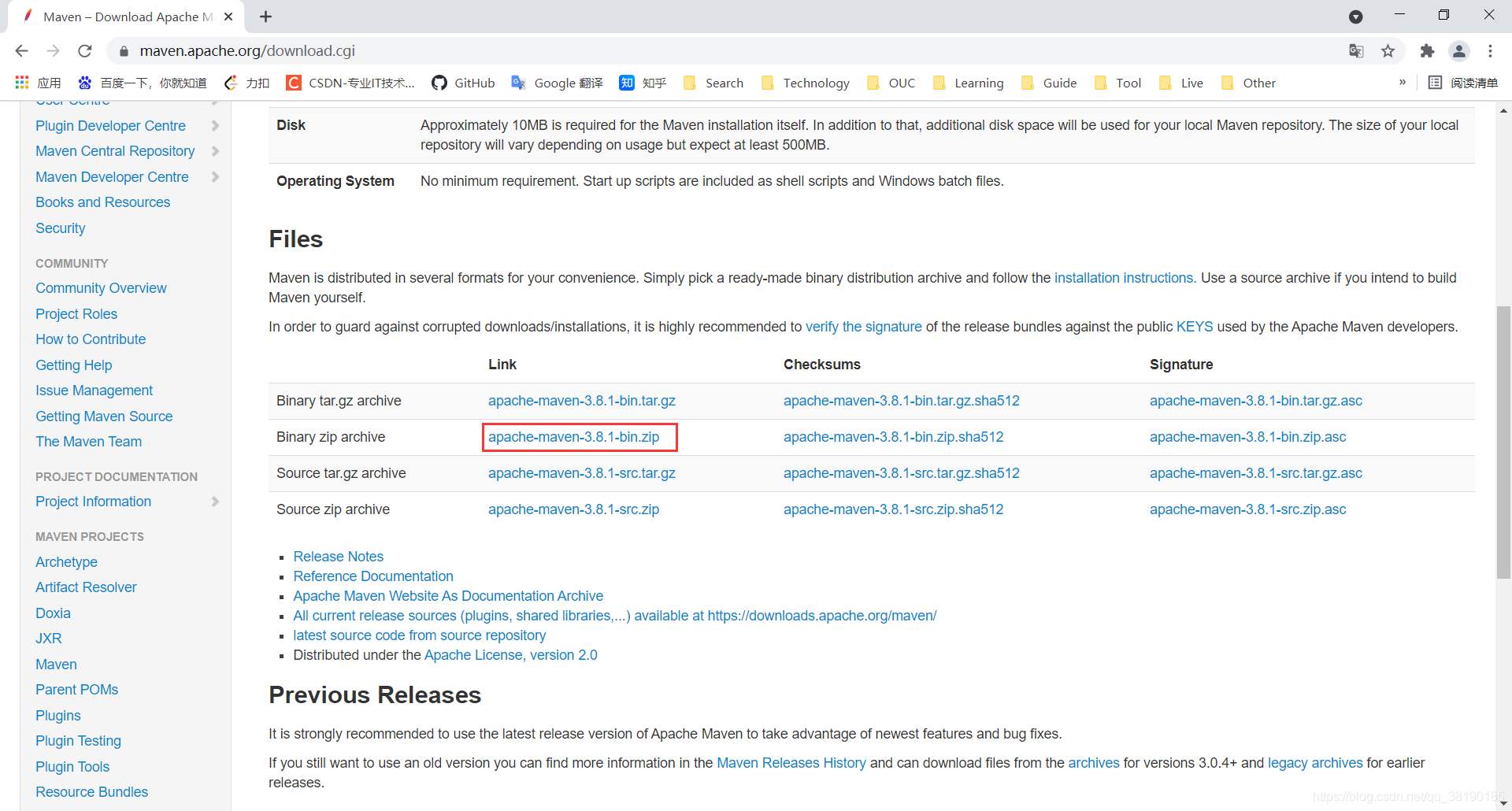
、
2.下载完成后,解压到某一路径下。本文以C:\Soft\Java\apache-maven-3.8.4为例,实际配置环境变量时以自己安装的路径为准。
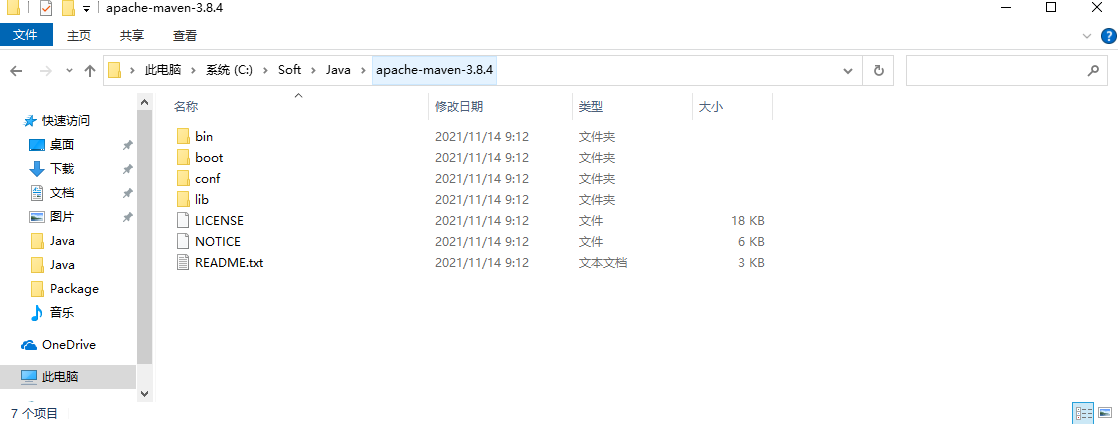
二、配置环境变量
- 右键此电脑–>属性–>高级系统设置–>环境变量
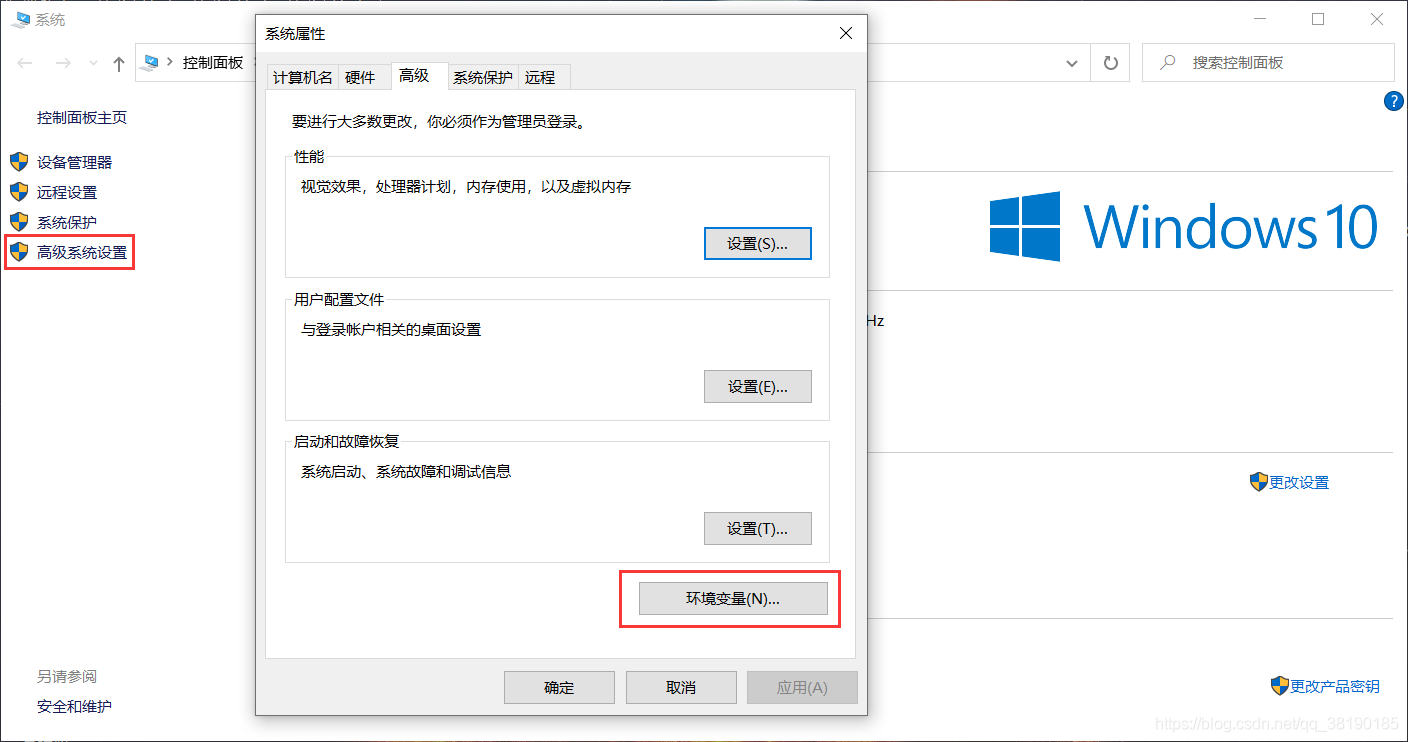
2.编辑变量Path,添加变量值C:\Soft\Java\apache-maven-3.8.4\bin(你自己安装的路径)
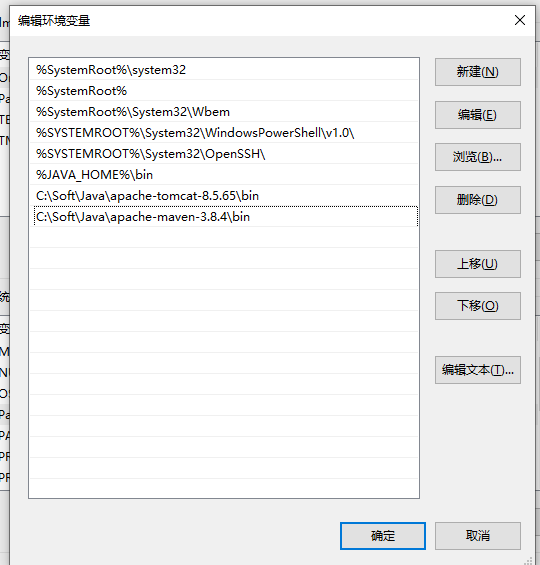
3.然后win+R运行cmd,输入mvn -version,如图所示则配置成功
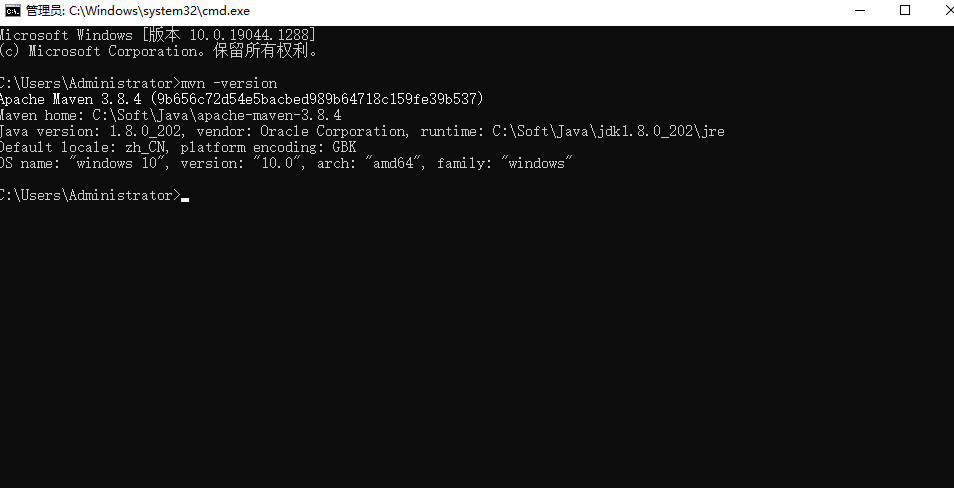
三、配置本地仓库
在C:\Soft\Java路径下与maven安装包同级目录下新建maven-repository文件夹,用作maven的本地库
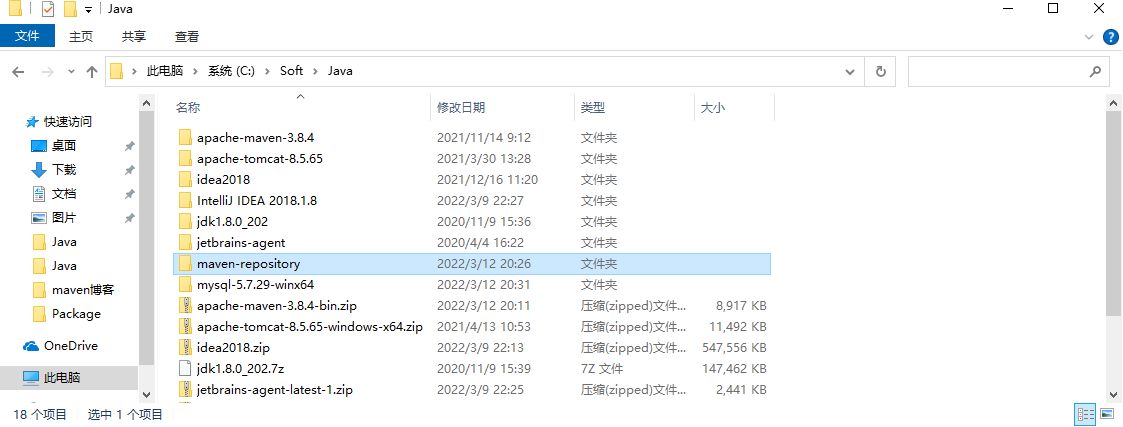
2.在路径C:\Soft\Java\apache-maven-3.8.4\conf下找到settings.xml文件
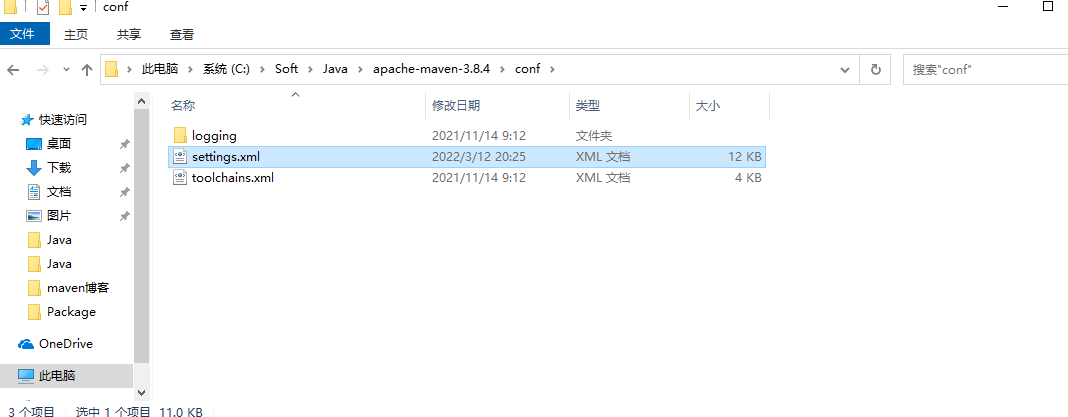
3.找到节点localRepository,在注释外添加 <localRepository>E:\Tools\Maven\maven-repository</localRepository>
如图:
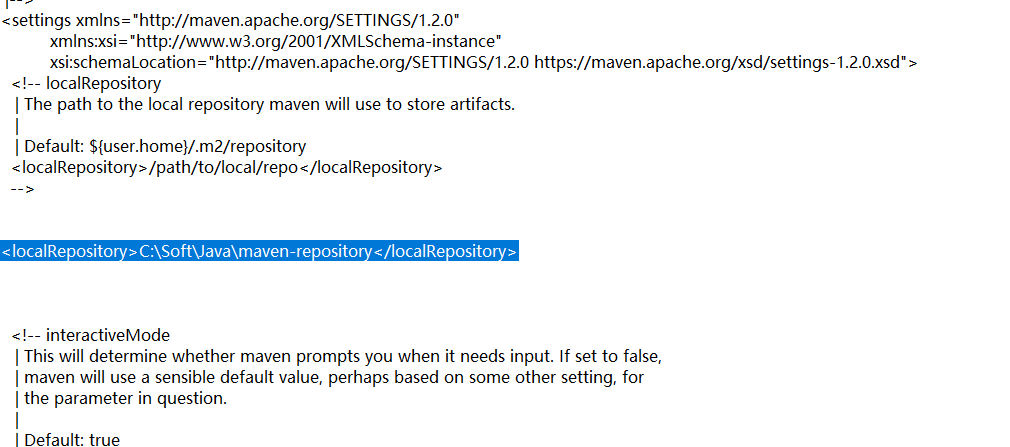
四、配置镜像
- 在settings.xml配置文件中找到mirrors节点
- 添加如下配置(注意要添加在<mirrors>和</mirrors>两个标签之间,其它配置同理)
<!-- 阿里云仓库 -->
<mirror>
<id>alimaven</id>
<mirrorOf>central</mirrorOf>
<name>aliyun maven</name>
<url>http://maven.aliyun.com/nexus/content/repositories/central/</url>
</mirror>
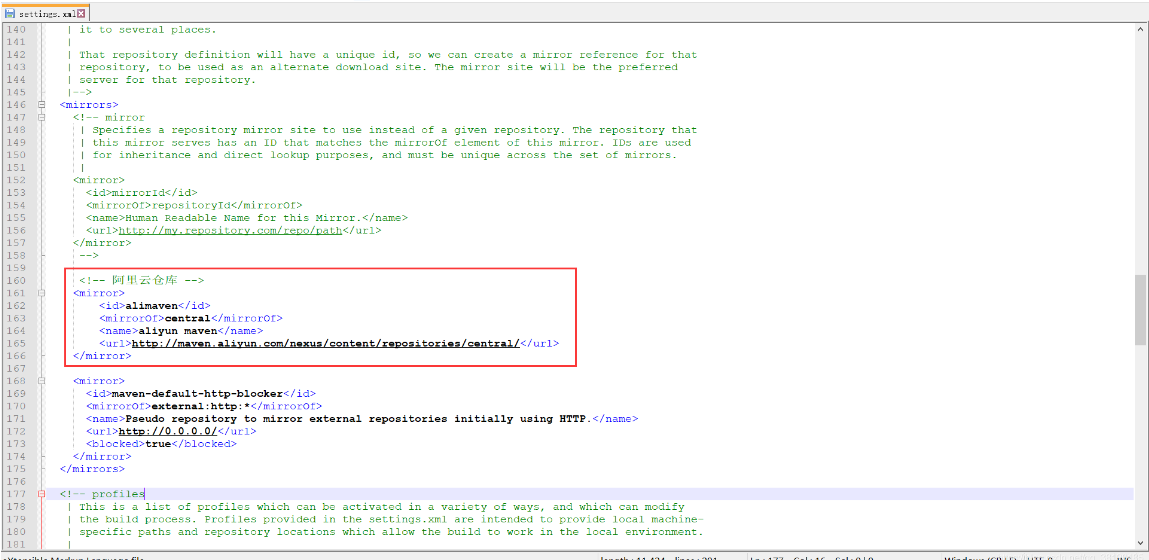
五、配置JDK
- 在settings.xml配置文件中找到profiles节点
- 添加如下配置
<!-- java版本 -->
<profile>
<id>jdk-1.8</id>
<activation>
<activeByDefault>true</activeByDefault>
<jdk>1.8</jdk>
</activation> <properties>
<maven.compiler.source>1.8</maven.compiler.source>
<maven.compiler.target>1.8</maven.compiler.target>
<maven.compiler.compilerVersion>1.8</maven.compiler.compilerVersion>
</properties>
</profile>

End
配置完成,win+R运行cmd,输入mvn help:system测试,配置成功则本地仓库(C:\Soft\Java\maven-repository)中会出现一些文件
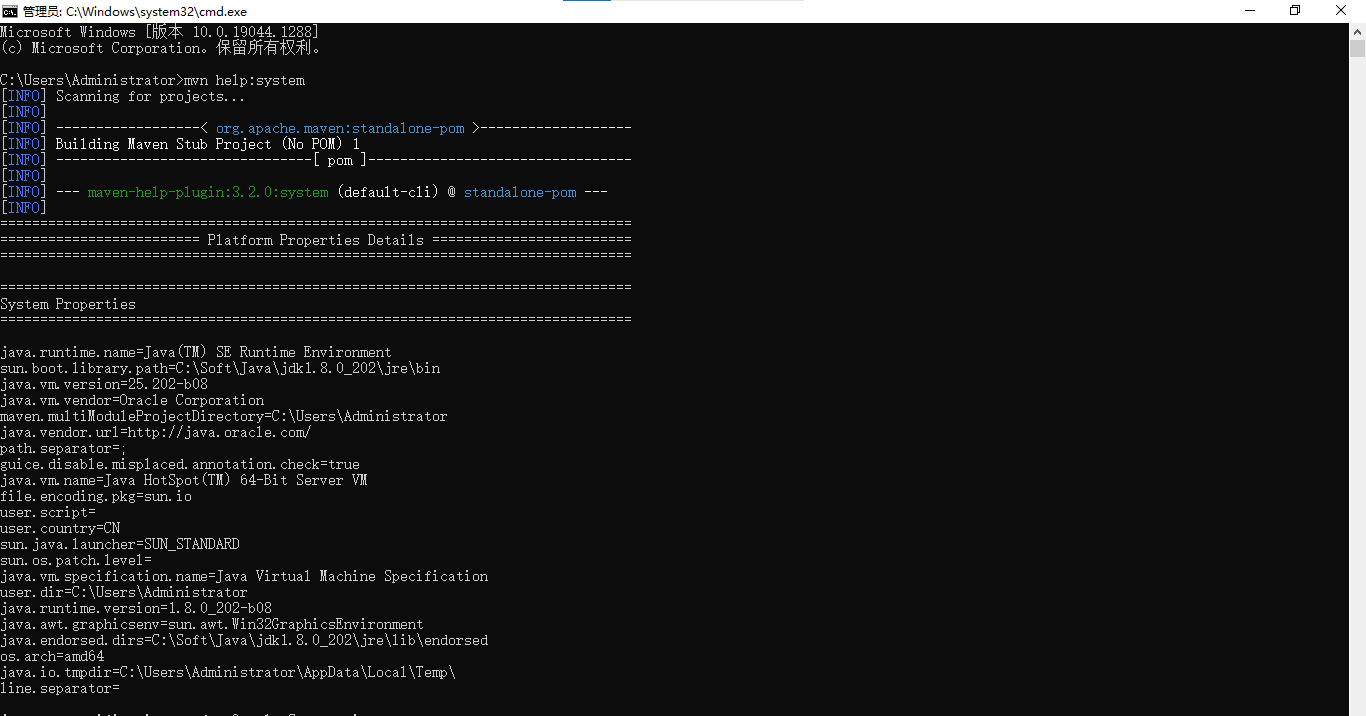
附:
完整的settings.xml配置文件,可以直接复制使用,只需要修改相应的路径即可


<?xml version="1.0" encoding="UTF-8"?> <!--
Licensed to the Apache Software Foundation (ASF) under one
or more contributor license agreements. See the NOTICE file
distributed with this work for additional information
regarding copyright ownership. The ASF licenses this file
to you under the Apache License, Version 2.0 (the
"License"); you may not use this file except in compliance
with the License. You may obtain a copy of the License at http://www.apache.org/licenses/LICENSE-2.0 Unless required by applicable law or agreed to in writing,
software distributed under the License is distributed on an
"AS IS" BASIS, WITHOUT WARRANTIES OR CONDITIONS OF ANY
KIND, either express or implied. See the License for the
specific language governing permissions and limitations
under the License.
--> <!--
| This is the configuration file for Maven. It can be specified at two levels:
|
| 1. User Level. This settings.xml file provides configuration for a single user,
| and is normally provided in ${user.home}/.m2/settings.xml.
|
| NOTE: This location can be overridden with the CLI option:
|
| -s /path/to/user/settings.xml
|
| 2. Global Level. This settings.xml file provides configuration for all Maven
| users on a machine (assuming they're all using the same Maven
| installation). It's normally provided in
| ${maven.conf}/settings.xml.
|
| NOTE: This location can be overridden with the CLI option:
|
| -gs /path/to/global/settings.xml
|
| The sections in this sample file are intended to give you a running start at
| getting the most out of your Maven installation. Where appropriate, the default
| values (values used when the setting is not specified) are provided.
|
|-->
<settings xmlns="http://maven.apache.org/SETTINGS/1.2.0"
xmlns:xsi="http://www.w3.org/2001/XMLSchema-instance"
xsi:schemaLocation="http://maven.apache.org/SETTINGS/1.2.0 https://maven.apache.org/xsd/settings-1.2.0.xsd">
<!-- localRepository
| The path to the local repository maven will use to store artifacts.
|
| Default: ${user.home}/.m2/repository
<localRepository>/path/to/local/repo</localRepository>
-->
<localRepository>C:\Soft\Java\maven-repository</localRepository>
<!-- interactiveMode
| This will determine whether maven prompts you when it needs input. If set to false,
| maven will use a sensible default value, perhaps based on some other setting, for
| the parameter in question.
|
| Default: true
<interactiveMode>true</interactiveMode>
--> <!-- offline
| Determines whether maven should attempt to connect to the network when executing a build.
| This will have an effect on artifact downloads, artifact deployment, and others.
|
| Default: false
<offline>false</offline>
--> <!-- pluginGroups
| This is a list of additional group identifiers that will be searched when resolving plugins by their prefix, i.e.
| when invoking a command line like "mvn prefix:goal". Maven will automatically add the group identifiers
| "org.apache.maven.plugins" and "org.codehaus.mojo" if these are not already contained in the list.
|-->
<pluginGroups>
<!-- pluginGroup
| Specifies a further group identifier to use for plugin lookup.
<pluginGroup>com.your.plugins</pluginGroup>
-->
</pluginGroups> <!-- proxies
| This is a list of proxies which can be used on this machine to connect to the network.
| Unless otherwise specified (by system property or command-line switch), the first proxy
| specification in this list marked as active will be used.
|-->
<proxies>
<!-- proxy
| Specification for one proxy, to be used in connecting to the network.
|
<proxy>
<id>optional</id>
<active>true</active>
<protocol>http</protocol>
<username>proxyuser</username>
<password>proxypass</password>
<host>proxy.host.net</host>
<port>80</port>
<nonProxyHosts>local.net|some.host.com</nonProxyHosts>
</proxy>
-->
</proxies> <!-- servers
| This is a list of authentication profiles, keyed by the server-id used within the system.
| Authentication profiles can be used whenever maven must make a connection to a remote server.
|-->
<servers>
<!-- server
| Specifies the authentication information to use when connecting to a particular server, identified by
| a unique name within the system (referred to by the 'id' attribute below).
|
| NOTE: You should either specify username/password OR privateKey/passphrase, since these pairings are
| used together.
|
<server>
<id>deploymentRepo</id>
<username>repouser</username>
<password>repopwd</password>
</server>
--> <!-- Another sample, using keys to authenticate.
<server>
<id>siteServer</id>
<privateKey>/path/to/private/key</privateKey>
<passphrase>optional; leave empty if not used.</passphrase>
</server>
-->
</servers> <!-- mirrors
| This is a list of mirrors to be used in downloading artifacts from remote repositories.
|
| It works like this: a POM may declare a repository to use in resolving certain artifacts.
| However, this repository may have problems with heavy traffic at times, so people have mirrored
| it to several places.
|
| That repository definition will have a unique id, so we can create a mirror reference for that
| repository, to be used as an alternate download site. The mirror site will be the preferred
| server for that repository.
|-->
<mirrors>
<!-- mirror
| Specifies a repository mirror site to use instead of a given repository. The repository that
| this mirror serves has an ID that matches the mirrorOf element of this mirror. IDs are used
| for inheritance and direct lookup purposes, and must be unique across the set of mirrors.
|
<mirror>
<id>mirrorId</id>
<mirrorOf>repositoryId</mirrorOf>
<name>Human Readable Name for this Mirror.</name>
<url>http://my.repository.com/repo/path</url>
</mirror>
-->
<!-- 阿里云仓库 -->
<mirror>
<id>alimaven</id>
<mirrorOf>central</mirrorOf>
<name>aliyun maven</name>
<url>http://maven.aliyun.com/nexus/content/repositories/central/</url>
</mirror>
<mirror>
<id>maven-default-http-blocker</id>
<mirrorOf>external:http:*</mirrorOf>
<name>Pseudo repository to mirror external repositories initially using HTTP.</name>
<url>http://0.0.0.0/</url>
<blocked>true</blocked>
</mirror>
</mirrors> <!-- profiles
| This is a list of profiles which can be activated in a variety of ways, and which can modify
| the build process. Profiles provided in the settings.xml are intended to provide local machine-
| specific paths and repository locations which allow the build to work in the local environment.
|
| For example, if you have an integration testing plugin - like cactus - that needs to know where
| your Tomcat instance is installed, you can provide a variable here such that the variable is
| dereferenced during the build process to configure the cactus plugin.
|
| As noted above, profiles can be activated in a variety of ways. One way - the activeProfiles
| section of this document (settings.xml) - will be discussed later. Another way essentially
| relies on the detection of a system property, either matching a particular value for the property,
| or merely testing its existence. Profiles can also be activated by JDK version prefix, where a
| value of '1.4' might activate a profile when the build is executed on a JDK version of '1.4.2_07'.
| Finally, the list of active profiles can be specified directly from the command line.
|
| NOTE: For profiles defined in the settings.xml, you are restricted to specifying only artifact
| repositories, plugin repositories, and free-form properties to be used as configuration
| variables for plugins in the POM.
|
|-->
<profiles>
<!-- profile
| Specifies a set of introductions to the build process, to be activated using one or more of the
| mechanisms described above. For inheritance purposes, and to activate profiles via <activatedProfiles/>
| or the command line, profiles have to have an ID that is unique.
|
| An encouraged best practice for profile identification is to use a consistent naming convention
| for profiles, such as 'env-dev', 'env-test', 'env-production', 'user-jdcasey', 'user-brett', etc.
| This will make it more intuitive to understand what the set of introduced profiles is attempting
| to accomplish, particularly when you only have a list of profile id's for debug.
|
| This profile example uses the JDK version to trigger activation, and provides a JDK-specific repo.
<profile>
<id>jdk-1.4</id> <activation>
<jdk>1.4</jdk>
</activation> <repositories>
<repository>
<id>jdk14</id>
<name>Repository for JDK 1.4 builds</name>
<url>http://www.myhost.com/maven/jdk14</url>
<layout>default</layout>
<snapshotPolicy>always</snapshotPolicy>
</repository>
</repositories>
</profile>
-->
<profile>
<id>jdk-1.8</id>
<activation>
<activeByDefault>true</activeByDefault>
<jdk>1.8</jdk>
</activation> <properties>
<maven.compiler.source>1.8</maven.compiler.source>
<maven.compiler.target>1.8</maven.compiler.target>
<maven.compiler.compilerVersion>1.8</maven.compiler.compilerVersion>
</properties>
</profile>
<!--
| Here is another profile, activated by the system property 'target-env' with a value of 'dev',
| which provides a specific path to the Tomcat instance. To use this, your plugin configuration
| might hypothetically look like:
|
| ...
| <plugin>
| <groupId>org.myco.myplugins</groupId>
| <artifactId>myplugin</artifactId>
|
| <configuration>
| <tomcatLocation>${tomcatPath}</tomcatLocation>
| </configuration>
| </plugin>
| ...
|
| NOTE: If you just wanted to inject this configuration whenever someone set 'target-env' to
| anything, you could just leave off the <value/> inside the activation-property.
|
<profile>
<id>env-dev</id> <activation>
<property>
<name>target-env</name>
<value>dev</value>
</property>
</activation> <properties>
<tomcatPath>/path/to/tomcat/instance</tomcatPath>
</properties>
</profile>
-->
</profiles> <!-- activeProfiles
| List of profiles that are active for all builds.
|
<activeProfiles>
<activeProfile>alwaysActiveProfile</activeProfile>
<activeProfile>anotherAlwaysActiveProfile</activeProfile>
</activeProfiles>
-->
</settings>
Maven安装与配置——详细教程的更多相关文章
- MySQL5.7免安装版配置详细教程
MySQL5.7免安装版配置详细教程 一. 软件下载 Mysql是一个比较流行且很好用的一款数据库软件,如下记录了我学习总结的mysql免安装版的配置经验,要安装的朋友可以当做参考哦 mysql5.7 ...
- Tableau Server注册安装及配置详细教程
Tableau Server注册安装及配置详细教程 本文讲解的是 Tableau Server 10.0 版本的安装及配置 这里分享的 TableauServer 安装版本为64位的10.0版本Ser ...
- dedecms织梦二次开发报名表单模块插件安装及配置详细教程
网上找了很多,都不是太满意,功能不全不全不说,还没有详细的安装配置教程,经过自己的折腾,成功了修改程序并配置成功,亲测,试用没有问题!所以,决定给大家出一个针对新手的详细教程. 废话不多,直接上干货. ...
- Git安装与配置——详细教程1
1.下载Git客户端 想要安装Git首先要下载Git的安装包程序. Git安装包下载地址:https://git-scm.com/downloads/ 2.安装Git 双击安装程序进行安装: a. 欢 ...
- MySQL的安装与配置——详细教程
免安装版的Mysql MySQL关是一种关系数据库管理系统,所使用的 SQL 语言是用于访问数据库的最常用的 标准化语言,其特点为体积小.速度快.总体拥有成本低,尤其是开放源码这一特点,在 Web 应 ...
- 【转】MySQL的安装与配置——详细教程-window系统下
https://www.cnblogs.com/winton-nfs/p/11524007.html 免安装版的Mysql MySQL关是一种关系数据库管理系统,所使用的 SQL 语言是用于访问数据库 ...
- nvm安装和配置详细教程
nvm是nodejs的版本管理工具,为什么要用nvm,你能百度到这篇文章相比是遇到不得不用的原因了,我们知道nodejs官方更新的速度非常快,有时候业务需要需要用某某版本,如果用的是msi安装,虽然安 ...
- solr的安装及配置详细教程/solr入门教程
1 solr的下载 从Solr官方网站(http://lucene.apache.org/solr/ )下载Solr最新版本,根据Solr的运行环境,Linux下需要下载solr-7.3.1.tgz, ...
- 苹果cms安装及配置详细教程
听说这个好!php+mysql的 下载 http://www.maccms.com/down.html 下载之后解压到你的网站跟目录中,就像这个样子的 后台目录 然后重要的一步来了,在ftp工具上 ...
随机推荐
- 「CTSC 2011」排列
「CTSC 2011」排列 要求不存在公差为 A 或者公比为 B 的子列,那么实际上可以把该问题转化为求一个图的最优拓朴序. 任意差为 A 或者比为 B 的两个数连一条边. 求一个合法序列的答案可以用 ...
- bom-location
<!DOCTYPE html> <html lang="en"> <head> <meta charset="UTF-8&quo ...
- HTML元素的隐藏方式
感谢原文作者:幼儿园中的小小白 原文链接:https://blog.csdn.net/weixin_43846130/article/details/95963426 一.元素的隐藏方式: 1.dis ...
- js变量类型判断 严格通用 Object.prototype.toString.call()
Object.prototype.toString.call()判断结果: Object.prototype.toString.call(true) "[object Boolean]&qu ...
- 使用python实现冒泡排序和快速排序
1 def bubble(arr): 2 """冒泡排序""" 3 loop = len(arr) - 1 4 if loop > 0 ...
- Redis性能管理
Redis性能管理 目录 Redis性能管理 一.查看Redis内存使用 二.内存碎片率 三.内存使用率 四.避免内存交换发生的方法 1. Hash数据类型 1.1 HSET/HGET/HDEL/HE ...
- ASP.NET Core 6框架揭秘实例演示[01]: 编程初体验
作为<ASP.NET Core 3框架揭秘>的升级版,<ASP.NET Core 6框架揭秘>提供了很多新的章节,同时对现有的内容进行大量的修改.虽然本书旨在对ASP.NET ...
- pm2 部署 vue
链接:我整理了一个网站, 用来介绍一些有意思和实用工具的网站, 我没有打包, 直接甩上去了 因为vue是用 npm run dev 来运行的, 你用pm2 npm run dev 是错误的 需要加上- ...
- Kubernetes:健康检查
Blog:博客园 个人 应用在运行过程中难免会出现错误,如程序异常.软件异常.硬件故障.网络故障等.因此,系统通过一些手段来判断应用是否运行正常,这些手段称之为健康检查(诊断). 前置知识 回顾一下P ...
- 7、前端--jQuery简介、基本选择器、基本筛选器、属性选择器、表单选择器、筛选器方法、节点操作、绑定事件
jQuery简介 宗旨:Write less, do more. 内部封装了js代码 是编程更加简单并且兼容所有的主流浏览器 版本:1.x 2.x 3.x # 可以使用3.x最新版 是第三方的类库:使 ...
